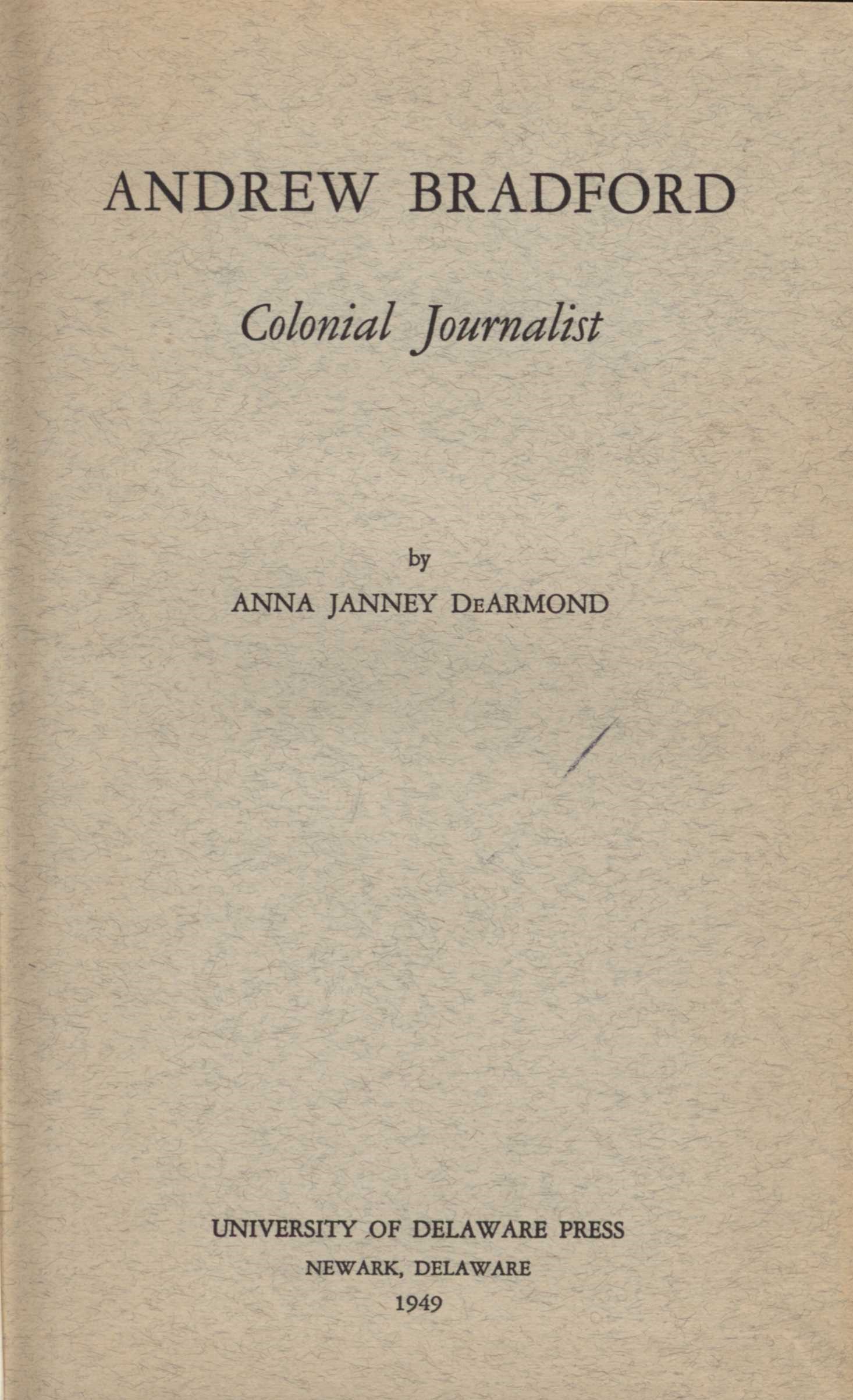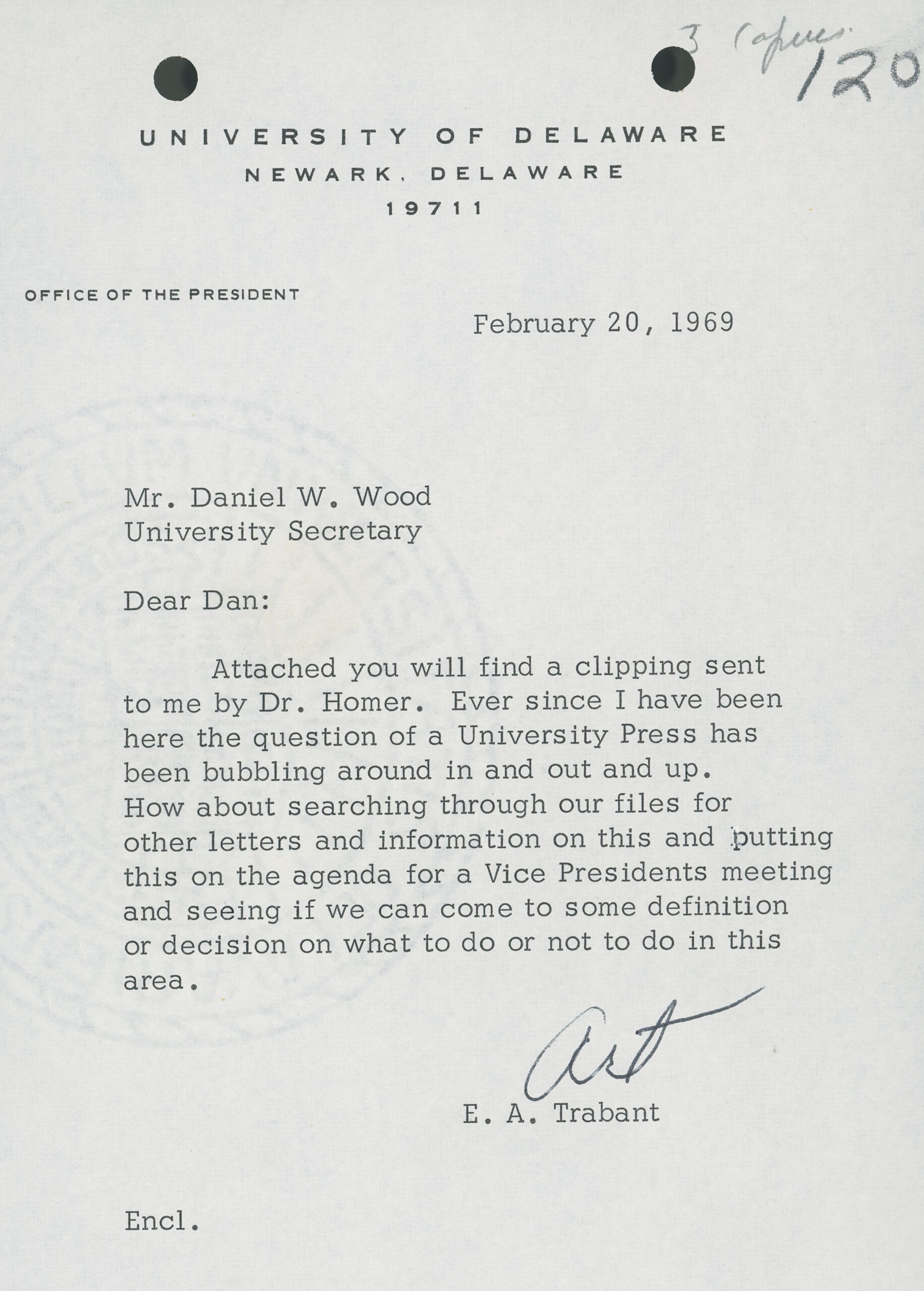Anna Janney DeArmond had compiled and curated issues of Andrew Bradford’s American Weekly Mercury, one of the main competitors of Benjamin Franklin’s Pennsylvania Gazette in colonial Philadelphia, to demonstrate Bradford’s journalistic efforts. In 1948, the Committee on Faculty Publications decided to redirect some of its funds usually reserved for Delaware Notes toward DeArmond’s book. This decision coincided with a significant expansion of the committee’s scope. It wouldn’t just oversee Delaware Notes and be a resource to faculty on publishing opportunities, but would now also formulate policies governing the editing and printing of all academic publications under university auspices, and assist all faculty authors. This led the committee to announce that DeArmond’s Andrew Bradford, Colonial Journalist would be just the first in a series of monographs it would publish—the committee chose to publish all titles in this series under the University of Delaware Press name.
The revival of book publishing activity led to interest from both the faculty and the administration in reestablishing a press on campus. John Perkins was now the president of the university, and he was interested in working with another university press to set up infrastructure for the production, marketing, and distribution of University of Delaware Press titles, which would provide a sustainable model for the press without the university having to create and pay for such infrastructure. The Committee on Faculty Publications undertook a study in the early 1950s exploring whether University of Delaware Press publications could be printed and distributed by an established university press.
As partnering with another press was debated throughout the 1950s, the University of Delaware Press kept publishing, with the sixth title in its monograph series already coming out by 1955, and the establishment of a partnership with the Institute of Delaware History and Culture to publish the institute’s pamphlets.
While President Perkins negotiated an arrangement with NYU Press to provide a small annual fund so that NYU could produce and distribute Delaware titles, he also commissioned a committee to study the future of the press that decided no fully operational press should be established at the university.
After Perkins approved the committee’s recommendations, NYU Press Director Francis Bellamy started up a nonprofit publishing consortium for university presses called University Publishers, so the press continued to operate through this partnership.
The press asked many involved questions to its authors to help guide University Publishers in the marketing and design of press books. This can be seen in the Publication Planning Guide above (left), in which authors were asked to provide information on their book's anticipated audience, the artwork included in the book, and budgetary limitations, and were invited to give ideas for their covers. Today, marketing, budget, and cover questions are all separated into different forms. The author's main concern in preparing their work is to ensure it is formatted according to press guidelines. This is facilitated through the Manuscript Formatting Checklist above (right), which is the form authors now fill out when preparing to submit their manuscript instead of the complex Publication Planning Guide.
But the consortium filed for bankruptcy just a few years later and the university struggled to determine a path forward for the press. In 1968, the Faculty Publications Committee wanted to explore establishing a professionally run, full-scale press or partnering with another press to accomplish certain operations, as it had done previously. They pushed for this just as E. Arthur Trabant was inaugurated as university president. He noted early in his presidency that he kept hearing the subject of a university press “bubbling around in and out and up.”






